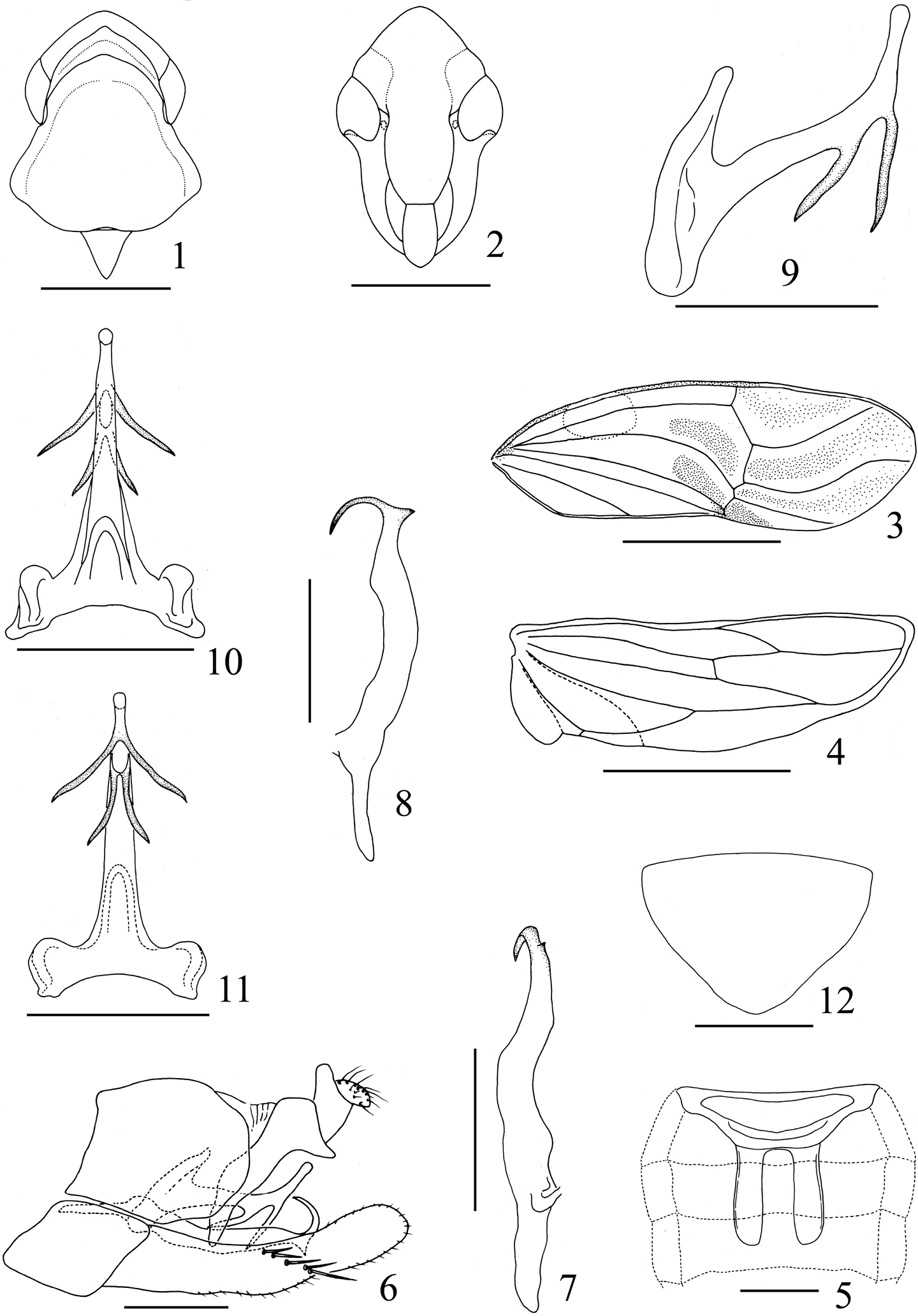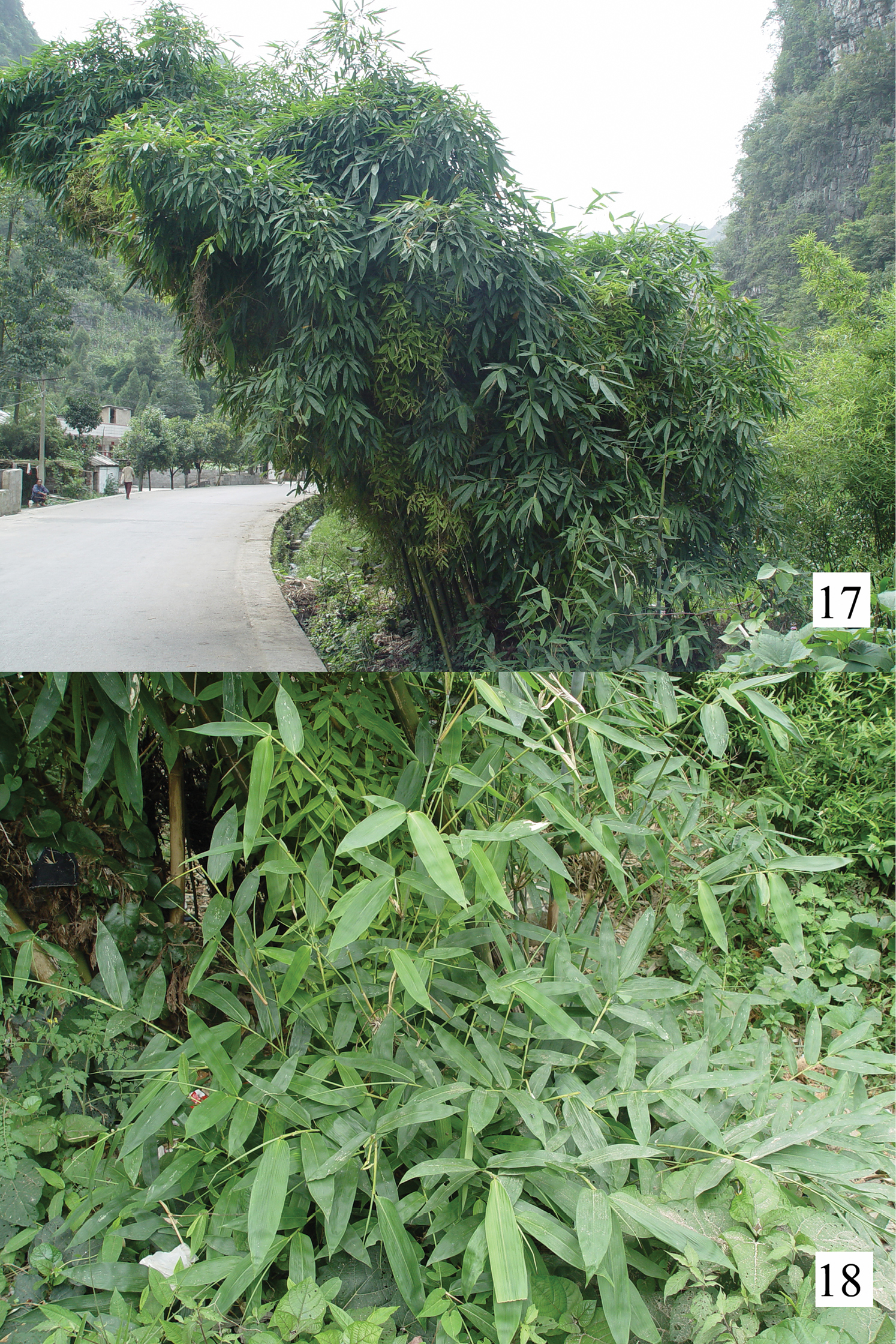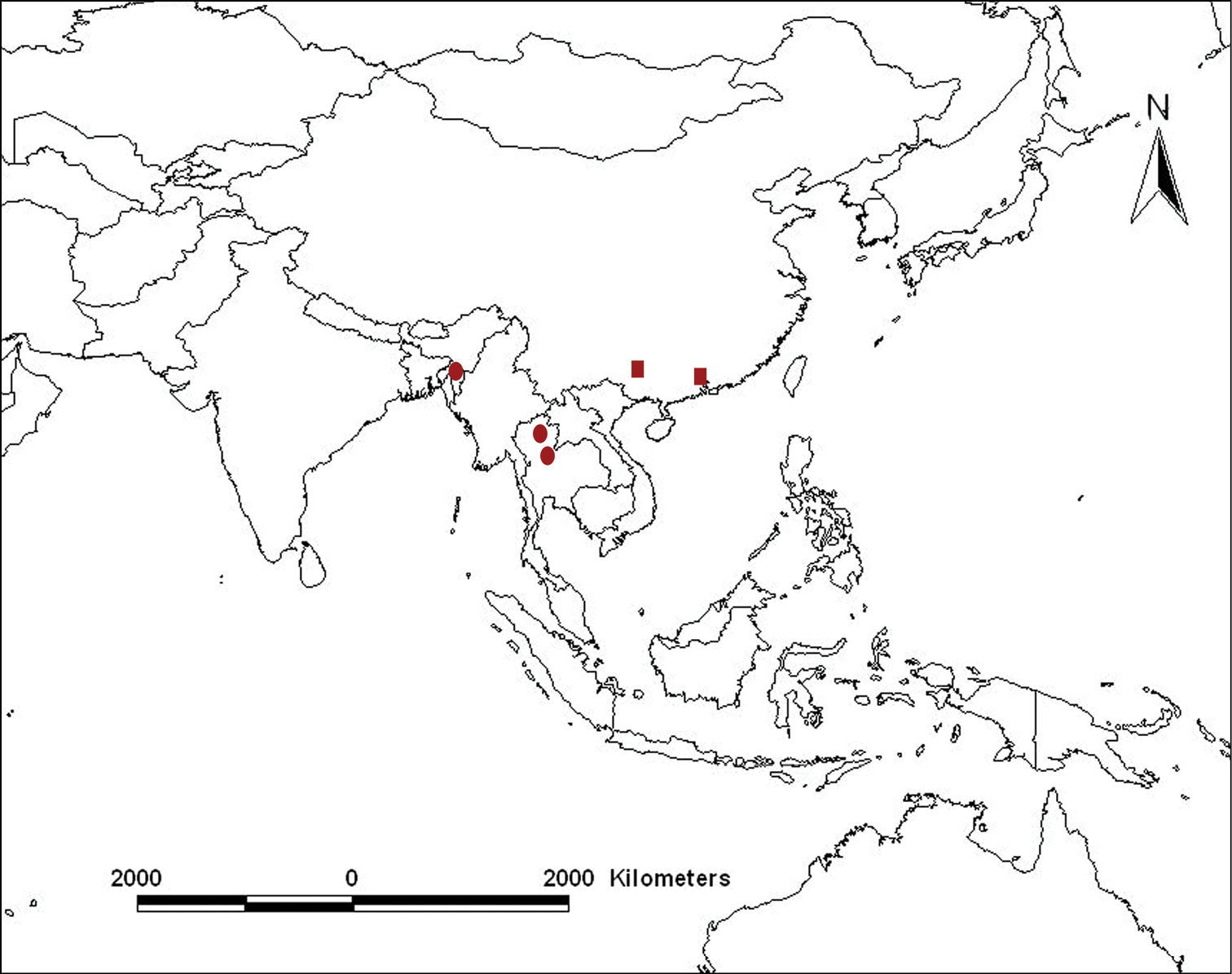






(C) 2012 Lin Yang. This is an open access article distributed under the terms of the Creative Commons Attribution License 3.0 (CC-BY), which permits unrestricted use, distribution, and reproduction in any medium, provided the original author and source are credited.
For reference, use of the paginated PDF or printed version of this article is recommended.
Sweta bambusana sp. n. (Hemiptera: Cicadellidae: Typhlocybinae: Dikraneurini), a new bamboo-feeding species, is described and illustrated from Guizhou and Guangdong of China. This represents the first record of the genus Sweta Viraktamath& Dietrich from China and the second known species of the genus. The new taxon extends the range of the genus Sweta, previously known only from northeast India and Thailand, considerably eastwards. A key for separation of the species of Sweta is given.
Cicadomorpha, distribution, Oriental region, taxonomy
The leafhopper genus Sweta was established by
During the course of studying species biodiversity of the bamboo-feeding leafhoppers in China (see Discussion), several specimens belonging to an undescribed species of the genus Sweta were found. The new species represents the first record of Sweta in China, and its discovery has broadened our knowledge of host plant and biogeography of the genus.
Materials and methodsTerminology used in this work follows
http://species-id.net/wiki/Sweta
Sweta hallucinata Viraktamath & Dietrich, 2011, by original designation.
Small size. Crown of the head strongly elevated above the anterior margin of the pronotum. Ocelli vestigial. Pronotum enlarged, strongly convex, and extended to the scutellar suture. Forewing broad, tectiform, with elongate, sinuate distal segments of veins R and M, closed preapical cells absent. Hind wing with the submarginal vein complete and veins RP and MA confluent. First hind tarsomere acuminate. Aedeagus fused to the connective. Female second valvulae asymmetrical.
Oriental region (Fig. 19).
This dikraneurine genus is remarkable because it has a feature unknown in other typhlocybinae but present in another leafhopper subfamily (Signoretiinae), i.e. the elongate pronotum. A full description of the genus was given by
Key to species of Sweta Viraktamath & Dietrich (male)
| 1 | Aedeagus with lower preapical processes distinctly longer than more distal processes; male abdomen with 3S apodemes extended to midlength of segment IV | Sweta hallucinata |
| – | Aedeagus with lower preapical processes slightly shorter than more distal processes (Figs 9–11); male abdomen with 3S apodemes extended to midlength of segment V (Fig. 5) | Sweta bambusana sp. n. |
urn:lsid:zoobank.org:act:E0CB16F2-4D98-4080-8981-9D69A313A2CF
http://species-id.net/wiki/Sweta_bambusana
Figs 1– 16Holotype: ♂, China: Guizhou, Huishui, Yantang (26°08'N, 106°39'E), collected from bamboo (Dendrocalamus affinis), 31 May 2008, X.-S. Chen and L. Yang (IEGU); paratypes: 3 ♀♀, same data as holotype (IEGU); 3 ♂♂, 4♀♀, Guizhou, Changshun, Weiyuan (26°02'N, 106°27'E), collected from bamboo (Dendrocalamus affinis), 30 Sept. 1997, X.-S. Chen and L. Yang (IEGU), one male and female deposited in BMNH; 3 ♀♀, Guangdong, Guangzhou, Baiyunshan (23°10'N, 113°18'E), collected from bamboo, 21 Nove. 2006, X.-S. Chen (IEGU).
The new species is named after the host plant bamboo (Bambusoideae).
Body length (from apex of vertex to tip of forewings): male 4.03–4.15 mm (N = 5); female 3.75–4.22 mm (N = 10); forewing length: male 3.25–3.30 mm (N = 5); female 3.05–3.31 mm (N = 10).
Milky white to pale yellow (Figs 13-16). Forewing cells rather clouded with faint pale brown; distal portions of tarsi dark brown (Figs 3, 13, 14).
External features as in diagnosis. Crown shorter medially than width between eyes (0.14:1). Pronotum shorter medially than width at widest part (0.55:1), longer medially than crown (4.0:1). Scutellum shorter medially than pronotum (0.31: 1). Forewing longer medially than width at widest part (2.95:1). Hindwing longer medially than width at widest part (3.65:1).
Male abdomen with 3S apodemes subparallel, extended to midlength of segment V (Fig. 5).
Aedeagus with both pair of preapical processes curved laterally, lower pair slightly shorter than more dorsal pair (Figs 9, 10, 11); shaft apex blunt and rounded. Other features as in generic diagnosis.
Seventh sternite (Fig. 12) broad basally, triangularly produced posteriorly with rather rounded apex.
Bamboo (Dendrocalamus affinis (Rendle) Mcclure) (Figs 17, 18).
Sweta bambusana sp. n. 1 Head and thorax, dorsal view 2 Head, anteroventral view 3 Forewing 4 Hindwing 5 Base of abdomen, ventral view 6 Male genital capsule, lateral view 7 Style, ventral view 8 Style, lateral view 9 Aedeagus, lateral view 10 Aedeagus, dorsal view 11 Aedeagus, ventral view 12 Female abdominal sternite VII, ventral veiw. Scale bars: = 1 mm (Figs 3, 4), 0.5 mm (Figs 1, 2), 0.2 (Figs 5–12)
Sweta bambusana sp. n. 13 Dorsal habitus, holotype from Huishui 14 Lateral habitus, holotype from Huishui 15 Head and thorax, dorsal view 16 Head, anteroventral view.
Host plant of Sweta bambusana sp. n. 17 View of the area where the types of Sweta bambusana were captured, in Changshun (Guizhou, China) with Dendrocalamus affinis 18 View of the plant.
Geographic distribution of Sweta species: Sweta hallucinata (●); Sweta bambusana sp. n. (■).
Southern China (Guizhou and Guangdong) (Fig. 19).
This new species is very closely related to Sweta hallucinata Viraktamath & Dietrich, 2011 from Thailand and India, but can be distinguished by the aedeagus with apex blunt and rounded (tapering in hallucinata); the lower pair of subapical processes slightly shorter than more dorsal pair (in hallucinata, the lower pair are distinctly longer than the more upper pair); male abdomen with the 3S apodemes extended to midlength of the segment V (extended to midlength of the segment IV in hallucinata); the female abdominal sternite VII more or less triangular (relatively rounded in hallucinata).
Diversity of bamboo-feeding leafhoppers. The present authors have paid particular attention to the species of bamboo-feeding leafhoppers in their field research and collected large numbers of specimens in the past 15 years from China including a number of new taxa and new records (
Host plant of new species. Sweta bambusana was found feeding exclusively on one species of native bamboo, Dendrocalamus affinis (Rendle) McClure (Figs 17, 18). No other information on biology of Sweta species, nor host plant damage caused, is available.
Distribution of Sweta species. Although both species of Sweta appear to be widespread in Southeast Asia (Fig. 19) they are very rare. The new species extends the range of the genus eastwards from northeast India and Thailand to China.
We are grateful to Prof. Guang-Qian Gou (College of Life Sciences, Guizhou University, China) for identifying the host plant bamboo. This research was supported by the National Natural Science Foundation of China (No. 31160163) and the International Science and Technology Cooperation Program of Guizhou (20107005).



